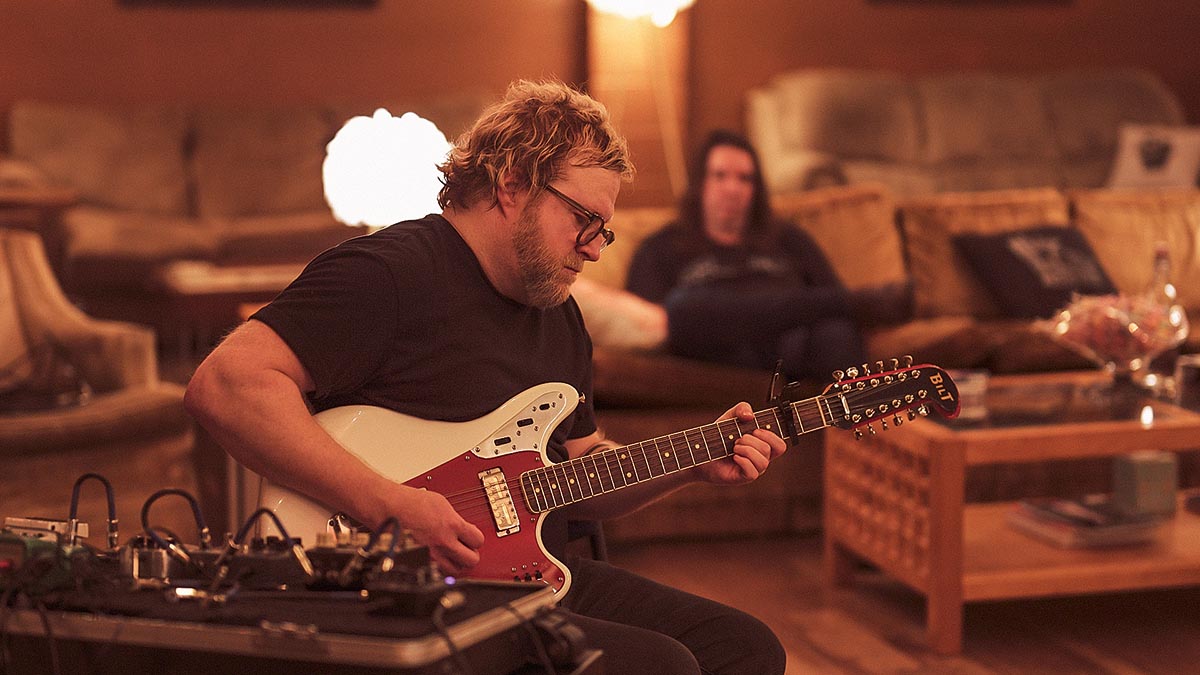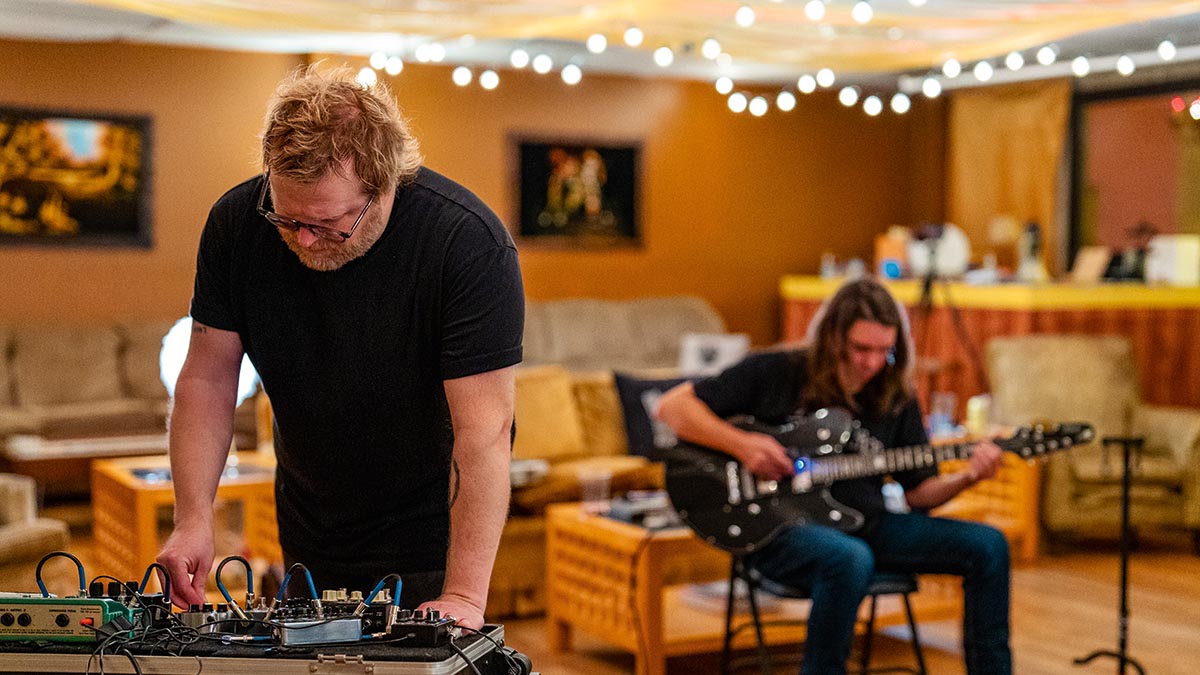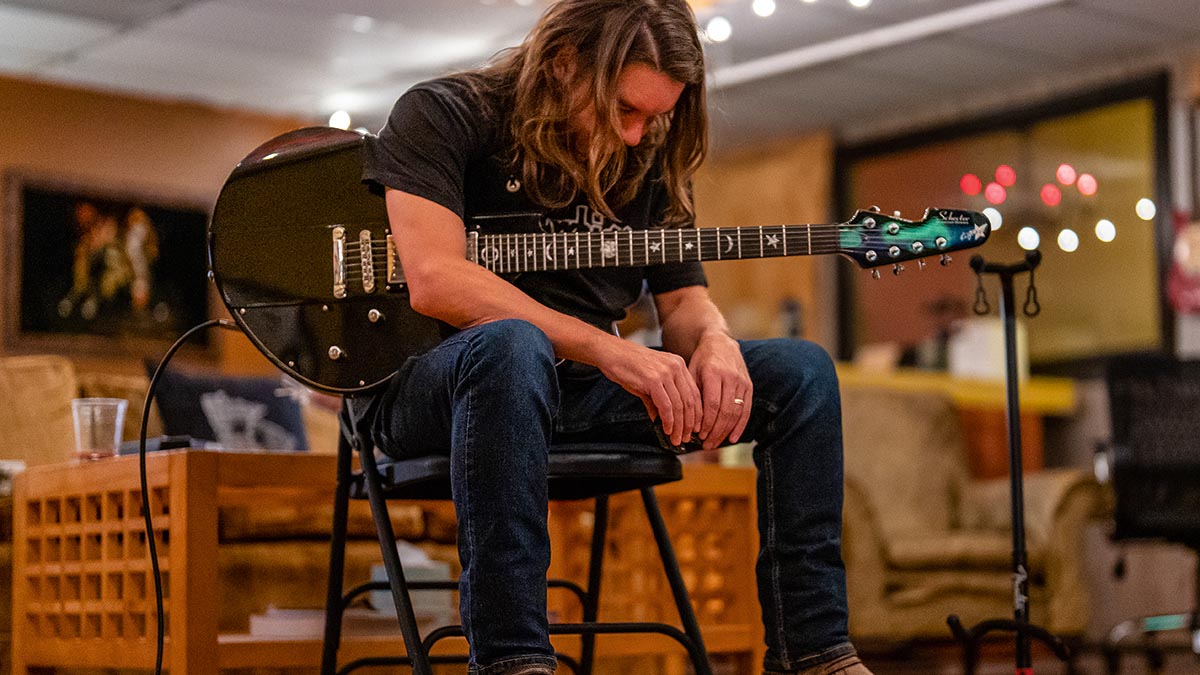Hammock’s Marc Byrd and Andrew Thompson: “People think they can do ambient music if they just have the right pedalboard, and they can’t. It’s an art form in itself”
The two ambient aficionados pick apart the careful, soundscape-sculpting six-string approach that helped them produce their most ambitious album to date, Love in the Void

20 years into their recording career, ambient duo Hammock have emerged with their most ambitious, life-affirming and guitar-stuffed album to date. Devised by Nashville-based guitarists-cum-producers Marc Byrd and Andrew Thompson, Love in the Void is Hammock’s 12th LP.
The recording took place over 10 days at Trace Horse Studios and featured contributions from outside musicians and engineers. “When you get to a point where you feel comfortable failing in front of one another,” Byrd says, “that’s when the magic starts to happen.”
Enchanting from the off, the largely instrumental record spirals outwards from the beat-less reverie of Procession, to the melodically intricate It’s OK To Be Afraid Of The Universe, through the heart-pounding EBow chaos at the epicenter of Gods Becoming Memories and beyond.
Dialing-in from Byrd’s ‘Breathturn’ home studio for this interview, we find the pair hard at work building a new track around reversed guitars. Such out-of-the-box thinking is characteristic of their approach, and years of nudging boundaries has led them to perfect practices that many would never even imagine in service of their experimental masterpieces.
“We come at it from a more intuitive place than a technical place,” Byrd says. “Friends who had the training get bored with guitar a lot faster than I do. I don’t really relate to anyone who’s ever said they’re bored with the guitar, and I’ve been doing this for a long time.”
As Thompson puts it, “There’s never-ending possibilities and that’s the beauty of it.” Whether exploring unfamiliar tunings or simply moving from one guitar to another, he underscores that “something new underneath your fingers” is often all it takes to inspire the spirit of invention.
An average Hammock song will feature 12 or more guitar parts, ingeniously layered and mixed to create depth and texture. “To cut through the wall of sound by the end of a song, the main part will be doubled or tripled,” Byrd says. “Sometimes that will be by taking the capo and going an octave up and playing that same part with a different voicing, and then you’ll have a counter-melody, an EBow part and a swell guitar.”
Get The Pick Newsletter
All the latest guitar news, interviews, lessons, reviews, deals and more, direct to your inbox!
The results can be surprising, as Thompson explains. “It’s funny, there’ll be some songs with very few tracks that sound massive,” he says. “Then there’ll be ones that have a massive amount of tracks that sound very small. That’s all by design.”
Carving out space for melodies among the textural strata is key, and the duo cite the influence of David Gilmour, Johnny Marr and Lindsey Buckingham on their tasteful toplines.
According to Byrd, “The approach is: instead of falling back on a wall of distortion and just adding another layer, how about adding another melody? Our manager thinks the way we approach guitar is like the way Brian Wilson approached harmonies in the Beach Boys.” Peter Katis, who mixed Hammock’s 2016 album Everything And Nothing, once coined it “guitar symphony."
“When we’re building songs with all these separate melodies, we set up each one as if it were in an orchestra,” Thompson says. “Each part will be the only thing on that track, so you can literally approach it when you mix as if you were conducting.”
A lifetime of collecting also means there’s a vast reserve of tonally different guitars to call upon as required, including a humbucker-clad Schecter Robert Smith UltraCure that Thompson dubs “surprisingly great," as well as more likely suspects like Fender Jazzmasters, Danelectros and various baritone guitars.
A 12-string BilT Relevator, loaded with Gold Foils and resembling the lovechild of a Jaguar and a Baldwin-Burns Double Six, earns a chef’s kiss from Byrd for its bold jangle, and a Gibson ES-165 Herb Ellis imparts its classy tones to the new album’s closing track The End Is The Beginning. “That thing, straight into an amp, is beautiful,” Thompson notes.
We’re all about creating more warble in the part and making your head vibrate
Marc Byrd
As for how dry tones like this find a home amid slabs of delay, reverb and fuzz, Thompson reveals the method: “What we’ll do a lot, if we have two or three guitars doing one part, is have a stereo guitar doing all the wash, and then – for example, with something we were working on yesterday – a mono off to the right that’s pretty tripped out, and a mono off to the left that’s basically dry. You get the clarity coming through but you still get the float.”
Adds Byrd: “Our doubling approach is not necessarily: get the sound, get the part and then double it with the same exact sound. We’re all about creating more warble in the part and making your head vibrate.”

To achieve this, they track through multiple amps, and make use of plenty of effects. “There’s a sickness we both suffer from – it’s called ‘guitar pedals’,” says Byrd, whose initial interest was sparked by The Edge. But he’s quick to point out that an enormous ‘board is no shortcut to shoegaze mastery.
Byrd used to wear through the knees of his jeans studying the craft – and has often been hired just to manipulate pedals for other bands’ recording sessions. “A lot of people think they can do ambient music if they just have the right pedalboard, and they can’t,” he says. “It’s an art form in itself.”
Thanks to having a zero tolerance policy towards complacency, a few old staples – including reverbs by Boss and a Keeley C4 compressor – are currently relegated to the subs bench. Even the laptop they’re calling from sits atop a Roland Space Echo that used to inhabit the end of their chain, but which has recently been sidelined by the likes of Strymon’s NightSky, Walrus Audio’s R1 and, their current number one, the Neunaber Immerse MKII Ultimate Reverberator.

After years of self-direction, Byrd has one key piece of advice to pass along: “There are no rules. If you have a good ear, trust your ear. There really shouldn’t be a limitation because someone at Guitar Center told you your pedalboard has to be set up a certain way. The order of the modulation and distortion can be switched around depending on what you’re trying to do.”
While the tones themselves might emanate from myriad metal boxes, the overall sonic scope of Love in the Void was enabled by a lengthy creative process, which, in turn, was enabled by the fact that Hammock work to their own schedule, rather than that of a major label. Thompson reveals that their post-production phase takes “an obscene amount of time," and the album is all the richer for having had 18 months to evolve.
“Time is good for art,” Byrd reflects. “It keeps you from taking this conveyor belt-type, utilitarian approach. There are times when you feel like you’re a channel; something rushes in and you’ve got to capture that moment of inspiration, but that’s the starting point. Get that down immediately, and build everything on top.”
- Love in the Void is out now via Hammock Music.
Since graduating university with a degree in English, Ellie has spent the last decade working in a variety of media, marketing and live events roles. As well as being a regular contributor to GuitarWorld.com, she currently heads up the marketing team of a mid-scale venue in the south-west of England. She started dabbling with guitars around the age of seven and has been borderline obsessed ever since. She has a particular fascination with alternate tunings, is forever hunting for the perfect slide for the smaller-handed guitarist, and derives a sadistic pleasure from bothering her drummer mates with a preference for wonky time signatures.
“An all-in-one power solution, on or off the grid”: D’Addario’s rechargeable XPND Pedal Power promises to make your ’board more portable – but only if you daisy chain
“Our new power supplies are about as state-of-the-art as you can get”: How Truetone’s game-changing 1 Spot Pro series is continuing to provide pro pedalboard power to the masses with the new CS11 and XP5

![A black-and-white action shot of Sergeant Thunderhoof perform live: [from left] Mark Sayer, Dan Flitcroft, Jim Camp and Josh Gallop](https://cdn.mos.cms.futurecdn.net/am3UhJbsxAE239XRRZ8zC8.jpg)









